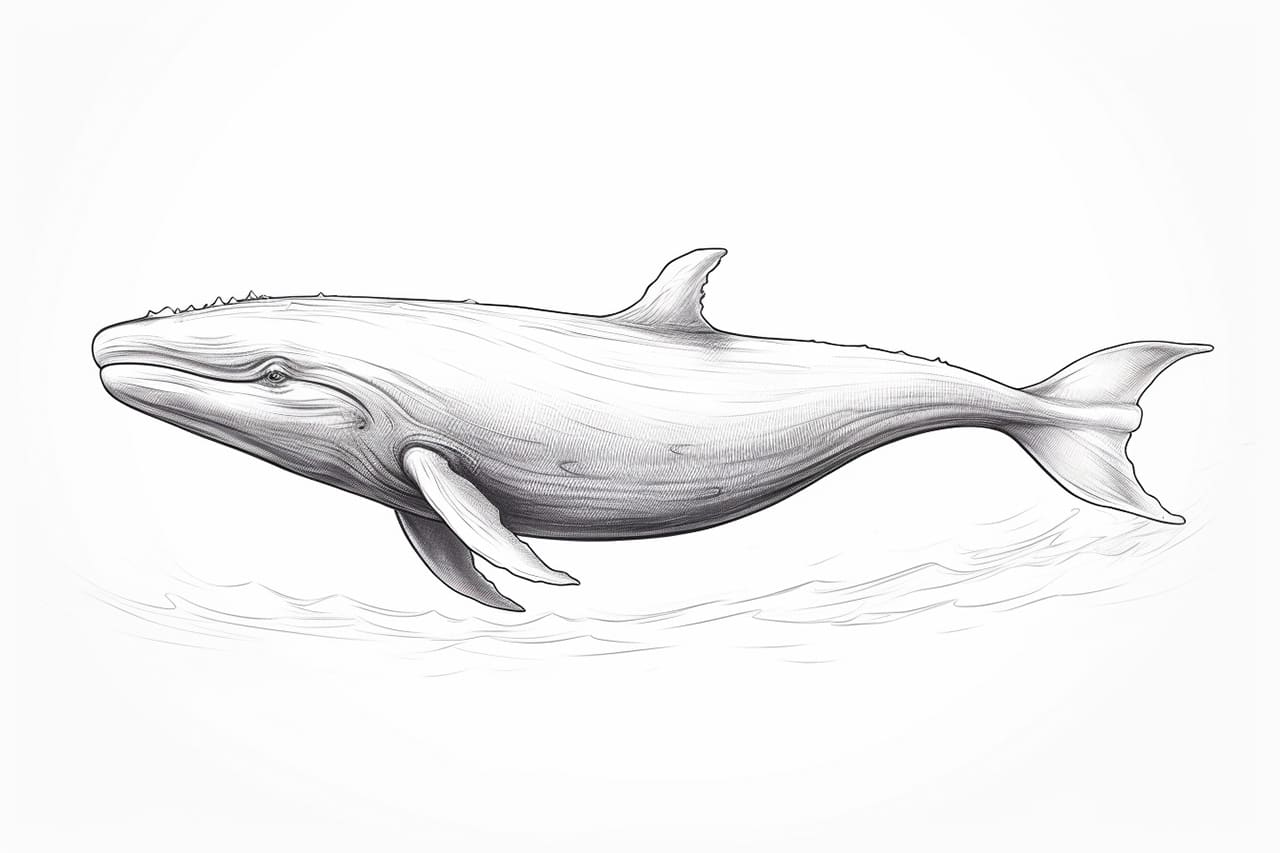Welcome to this step-by-step guide on how to draw a blue whale in all of its magnificent splendor. As the largest animal on Earth, the blue whale is a fascinating creature to observe and bring to life on paper. In this tutorial, we will cover everything you need to know to create your own impressive representation of this majestic marine mammal. So, grab your drawing materials and let’s get started!
Materials Required
To begin drawing a blue whale, you will need the following materials:
- Drawing paper or sketchbook
- Pencil
- Eraser
- Fine-tipped marker or pen
- Colored pencils or markers (optional)
Step 1: Understanding the Structure
Before we dive into drawing, let’s take a moment to understand the basic structure of a blue whale. A blue whale has a long and streamlined body with a large head and a distinctive, curving mouth called a baleen. It has a small dorsal fin and a fluke at the end of its tail. Familiarizing yourself with these features will help you accurately depict the whale in your artwork.
Step 2: Sketching the Body
Start by lightly sketching an elongated oval shape for the body of the blue whale. This will serve as a foundation for the rest of the drawing. Keep in mind that blue whales can reach lengths of up to 100 feet, so feel free to adjust the size of your oval accordingly.
Step 3: Adding the Head and Mouth
Next, sketch a smaller oval shape at one end of the body to represent the head. Blue whales have a distinctively large head, so make sure it is proportionate to the body. From the underside of the head, draw a gentle curve to represent the lower jaw. Extend the curve towards the back of the head to create the mouth, which should be shaped like a curving triangle.
Step 4: Outlining the Body and Tail
Using your initial sketches as a guide, start outlining the body of the blue whale. Curve the lines smoothly to create a sleek appearance. Remember to include the tiny dorsal fin near the middle of the body. Once you reach the end of the body, draw a large, triangular shape for the tail or fluke.
Step 5: Adding Details
Now that the basic form of the blue whale is complete, it’s time to add some detail. Draw a small, almond-shaped eye on the side of the head, towards the front. On the upper side of the head, sketch a few lines to represent the blowhole. These lines should be slightly curved and positioned above the eye.
Step 6: Refining the Outline
Take a look at your initial sketch and identify any areas that need adjustment. Use an eraser to gently remove any unwanted lines or mistakes. Refine the outlines by going over them with a darker pencil or a fine-tipped marker. Pay attention to the flow of the body and make sure the proportions are accurate.
Step 7: Adding Texture and Shading
To give your blue whale drawing more depth, consider adding some texture and shading. Use short, curved lines to create a sense of texture along the body, particularly around the mouth and baleen. Lightly shade the areas under the body and tail to add dimension. You can also use colored pencils or markers to add color to your drawing, following references to recreate the blue whale’s characteristic blue-gray coloration.
Conclusion
Congratulations on completing your blue whale drawing! By following these step-by-step instructions, you have learned how to capture the grace and grandeur of this magnificent marine mammal on paper. Remember, practice makes perfect, so feel free to experiment with different poses, perspectives, and artistic touches. With time and dedication, you’ll continue to improve your skills as an artist. Keep up the great work! Want to draw some other ocean dwellers? Try our tutorial on How to Draw a Whale.









